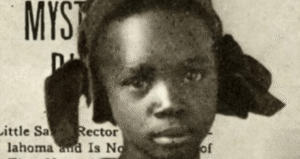Hiroo Onoda is one of the most extraordinary figures in modern military history. A Japanese intelligence officer, Onoda remained in hiding for nearly three decades after World War II had officially ended, refusing to surrender because he believed the war was still ongoing. His unwavering loyalty, resilience, and strict adherence to his orders made him a legendary figure, symbolizing both the incredible dedication of a soldier and the tragic consequences of wartime misinformation. His story is one of survival, discipline, and an unyielding belief in duty that kept him isolated from the modern world for almost 30 years.
Beyond being a fascinating historical anecdote, Onoda’s experience also speaks to the power of conviction, the psychological endurance of a soldier, and the broader impact of war on those who fight it. His ability to survive under extreme conditions while staying committed to a cause he believed was just, even when the world had moved on, makes him one of the most compelling figures in military history. His tale is not only one of personal perseverance but also an example of how misinformation and strict adherence to orders can shape a person’s destiny.
Early Life and Military Training
Born in Japan in 1922, Hiroo Onoda grew up in a traditional samurai-influenced household where duty and honor were highly valued. He was raised with the idea that loyalty and discipline were the cornerstones of a meaningful life. This strong foundation in Japanese values would later be a defining characteristic of his prolonged commitment to his mission.
In 1942, at the age of 20, he enlisted in the Imperial Japanese Army and trained as an intelligence officer. His training focused on guerrilla warfare, survival tactics, and psychological endurance—skills that would later become crucial in his prolonged isolation. Onoda was taught to gather intelligence, sabotage enemy operations, and never surrender, as the idea of captivity was considered dishonorable.
During his training, Onoda learned unconventional warfare tactics, including how to live off the land, evade capture, and conduct sabotage operations against enemy forces. He was also instructed to resist surrender at all costs, a principle ingrained in many Japanese soldiers of the time. His deep commitment to duty and refusal to waver from his training would later define his actions on Lubang Island.
Deployment to the Philippines
In 1944, as World War II neared its final stages, Onoda was sent to Lubang Island in the Philippines with strict orders to conduct guerrilla operations against Allied forces. He was explicitly commanded not to surrender under any circumstances and to hold his position until he was relieved by his superiors. These orders were given with the expectation that Japanese reinforcements would eventually arrive, but history had other plans.
Shortly after his arrival, the war took a dramatic turn, with Japan surrendering in August 1945 following the atomic bombings of Hiroshima and Nagasaki. However, Onoda and his small group of soldiers did not receive word of Japan’s surrender. Cut off from communication, they continued to carry out sabotage missions, believing that any reports of Japan’s defeat were enemy propaganda meant to trick them into surrendering.
The dense jungle and rugged terrain of Lubang Island provided a natural fortress, allowing Onoda and his men to evade capture for years. They established hidden camps, moved frequently, and relied on their training to survive undetected. Over time, they developed their own system of gathering intelligence, assuming that any outsiders were enemy spies attempting to lure them out.
Survival in the Jungle
Believing that reports of Japan’s surrender were enemy propaganda, Onoda and his men continued their mission, hiding in the dense jungles of Lubang Island. They survived on coconuts, bananas, and stolen livestock while carrying out occasional raids on local villages, convinced that the war was still ongoing. They avoided direct confrontation with Filipino forces and continued to operate in secrecy, always ready to launch guerrilla attacks if necessary.
Over the years, leaflets, newspapers, and even direct messages from Japanese officials were dropped into the jungle, urging them to surrender. Some of these leaflets contained messages from family members, yet Onoda dismissed them as psychological warfare tactics used by the enemy. The group meticulously examined any document they found, yet every message contradicting their belief that Japan was still fighting was met with skepticism.
As time passed, their survival techniques became more sophisticated. They developed hidden food caches, fashioned new weapons from salvaged materials, and moved through the jungle in ways that ensured they left no trace. Onoda’s leadership kept them focused, instilling discipline even as the years stretched on without any reinforcements or clear signs of an ongoing war.
The Death of His Comrades
For years, Onoda was accompanied by three fellow soldiers, but as time passed, his comrades either surrendered or were killed. By 1950, two had perished in skirmishes with Filipino forces, leaving Onoda and Private Kinshichi Kozuka as the last remaining holdouts. The two men continued their operations for another two decades, still firmly believing in their mission.
In 1972, Kozuka was killed in a clash with local police while the two were setting fire to rice supplies, believing they were carrying out their orders. His death was a major blow to Onoda, who now found himself completely alone. Yet, rather than surrendering, he became even more determined to fulfill his perceived duty, continuing to live in complete isolation and conducting minor sabotage missions against what he still believed were enemy targets.
The Discovery and Ultimate Surrender
In 1974, a young Japanese adventurer named Norio Suzuki set out on a quest to find Onoda, believing the legendary soldier was still alive. Astonishingly, Suzuki located Onoda in the jungle and tried to convince him that the war had long ended. However, Onoda refused to surrender without direct orders from his superior officer.
Suzuki returned to Japan with proof of Onoda’s existence, prompting the Japanese government to locate Onoda’s former commanding officer, Major Yoshimi Taniguchi. Taniguchi was flown to Lubang Island and personally ordered Onoda to lay down his arms. On March 9, 1974, after 29 years of hiding, Onoda finally surrendered, still wearing his Imperial Japanese Army uniform, carrying his rifle, and saluting the Japanese flag. His rifle was still in working condition, and he had kept a supply of ammunition, ready to continue fighting at a moment’s notice.
Life After the War
Upon returning to Japan, Onoda was greeted as both a national hero and a tragic figure. While many admired his loyalty and perseverance, others saw his story as a painful reminder of the devastation of war. Struggling to adapt to modern Japanese society, Onoda moved to Brazil, where he lived as a cattle rancher for several years. Eventually, he returned to Japan and became an advocate for traditional values, writing books and working with young people to instill discipline and resilience.
Legacy
Hiroo Onoda’s story remains one of the most remarkable tales of survival, dedication, and the power of belief. His unwavering commitment to his duty, even in the face of overwhelming evidence that the war was over, highlights both the strength and the tragedy of absolute loyalty. His story has inspired countless discussions on the psychological impact of war, the dangers of blind obedience, and the resilience of the human spirit. He passed away in 2014 at the age of 91, leaving behind a legacy that continues to fascinate historians, military strategists, and anyone intrigued by the extremes of human perseverance.




